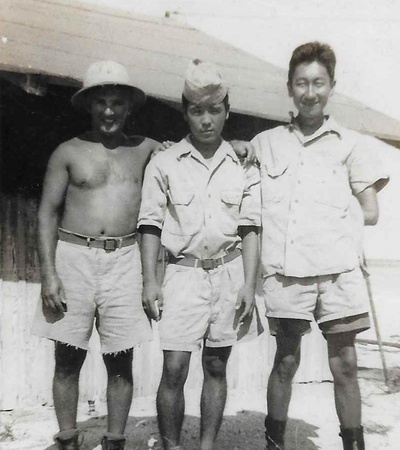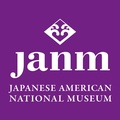It was a typically hectic Saturday morning. My son, Troy, and I were frantically driving home from basketball practice in order to be at baseball practice in an hour—and we couldn’t be late since I was the coach! As we turned onto our street, I told Troy, “When we get home, grab your baseball gear, grab a granola bar, and we are out of here! Time’s a ticking; focus on what’s important!” We were two dudes on a mission!
As we pulled into the driveway, I noticed an elderly man shuffling up the street. He had no cane, although he walked as if he needed one. His gait was slow and he looked tired. I wondered for a moment who he was. However, as soon as my car came to a stop, my curiosity was quickly replaced with an anxious sense that I had to get to practice. I bounded for the front door. Time’s a ticking; focus on what’s important!
“Excuse me,” I heard his voice behind me utter. Impatiently, I hoped this was going to be a quick conversation. I turned and responded, “Can I help you?”
I could see that he was Asian, perhaps in his late 80s or early 90s. I noticed that his feet were slightly swollen and protected only by a thin pair of rubber slippers.
Looking exhausted, he asked, “Can you tell me where Valley Blvd. is?”
Now, I realized this was not going to be a quick conversation. Valley Blvd. was about two miles away. Was he lost? Was he delusional?
“Well, sir, Valley Blvd is about two miles from here. How did you get here?” By now, I was losing any hope that I was going to get to practice on time!
“I walked,” he answered. “If you show me how to get there, I will go home.”
I was sure this gentleman wouldn’t make it to the end of the block, let alone to his home two miles away. “Sir, is there someone I can call to come get you?” I was still selfishly hoping to end the conversation and make it to practice on time.
“Oh, yes,” he replied as he eagerly pulled out his wallet. He slowly handed me a neatly folded piece of paper. I opened it and read his name—Nobuichi Nakayoshi. On the paper was his address (indeed, it was on Valley Blvd.), the name of his wife, and a phone number to call in case of emergency. I immediately felt a sense of shame. This man needed help and all I could think about was getting to practice.
“Mr. Nakayoshi, you are a long ways from home. Let me call your wife and tell her you are okay. I’ll take you home, if that’s all right with you.”
“Oh no, I don’t want to bother you. I can walk home,” he said stoically.
I didn’t know whether to laugh or cry, so I simply quipped, “Now, don’t you be a stubborn Nisei with me. I’m taking you home!”
He looked at me for a moment. Then, he smiled. We had been perfect strangers three minutes earlier. Now, we were connected by a shared heritage.
I called his wife. As one could imagine she was beside herself with worry. I introduced myself, told her that her husband was fine, and that I would bring him home. She asked where we were and I told her, “Monterey Park.” In response, she exclaimed, “How did he get there?!” Once again, I didn’t know whether to laugh or cry.
In the car I had the opportunity to ask Mr. Nakayoshi a few more questions. To my amazement, it turned out he was from Hawaii and had served in the U.S. Army after World War II. He talked about how those were tough times, yet he knew that the Nisei had to prove their loyalty. While humble, he was proud of what he and the other Americans of Japanese ancestry had accomplished. “Things are better now,” he softly repeated, “things are better now.” I thought to myself, “Yes, things are better now because of men like you.” I wished he lived twenty miles away so I could spend more time with him.
Mr. Nakayoshi’s wife and daughter were waiting for us in front of their house. When he stepped out of the car, their faces beamed with relief and delight. Mrs. Nakayoshi rushed forward crying, “Papa, where have you been?” She looked at him and then asked, “Where is your cane?” Mr. Nakayoshi simply shrugged and sheepishly responded, “I don’t know.”
We talked for a few minutes and figured out what had happened. Mr. Nakayoshi had taken out the trash can that morning. Instead of going back into the house, he decided to go for a walk—without his cane! A few wrong turns later, he was disoriented and lost. Several hours and a couple of miles later, he and I met.
On my way home, I thought about how fortunate Mr. Nakayoshi had been. On my street, not too many people are outside in the middle of the day. Additionally, not everyone speaks English. The timing of his approaching my house just as we were turning into the driveway was mind-boggling! Then it hit me. Mr. Nakayoshi wasn’t the lucky one—I was.
I had been given the opportunity to touch history and a chance to give a little back to someone who had given all of us so much. It was my good fortune, not his. To think, I might have missed it because I was so preoccupied with staying on schedule. There would be many more baseball practices, but not opportunities like this to show my gratitude. The lesson was clear—time’s a ticking, focus on what’s important.
* This article was originally published in The Rafu Shimpo.
© 20178 Mitch Maki





